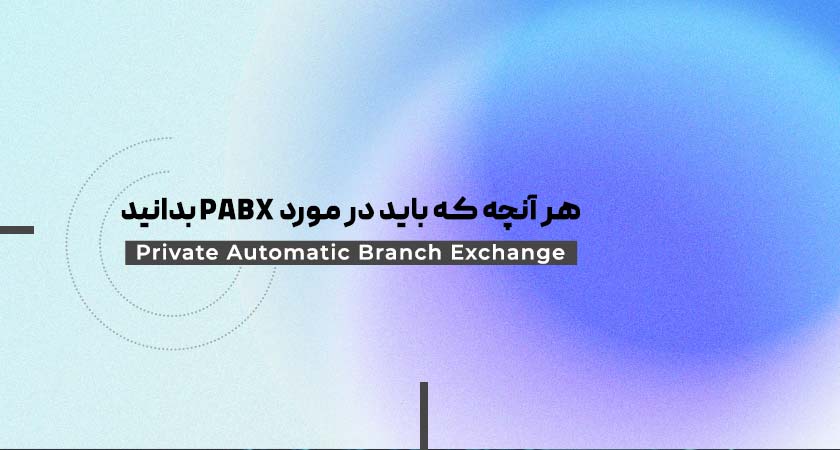Today, communication systems play a crucial role in most organizations. Regardless of the size of a company, having an efficient internal communication system that allows employees to communicate seamlessly is typically essential.
In the past, before the advent of the internet, business communications were mostly conducted through traditional landline phone systems installed in offices. These setups involved extensive cabling connecting fixed phones to ensure reliable and fast connections. However, these systems had significant drawbacks, such as vulnerability to external factors like power outages and rising service costs imposed by telecom providers.
Most commercial communication capabilities are possible with PBX (Private Branch Exchange) systems. Traditionally, companies needed a room full of operators to manage and transfer employee calls through analog methods. These operators also managed incoming calls, connecting them to the appropriate individuals.
However, with the introduction of Private Automatic Branch Exchange (PABX), these processes evolved. Communication costs for businesses dropped considerably, and the connection setup and response time improved. Therefore, In this article we’ll explore the primary differences between PBX and PABX and how these solutions can be implemented in business.

What is PABX?
As mentioned, PABX stands for Private Automatic Branch Exchange. This raises two questions: what exactly does this term encompass, and what are some of its key features?
As PBX technology improved and manual call transfers by operators were no longer needed, these changes led to the development of a new term to describe telephone systems in most organizational offices.
Phones equipped with PABX have completely eliminated the need for operator rooms, as the same tasks can be handled by pressing a button on the phone. Additionally, PABX users can make internal calls entirely free of charge.
Since these solutions were initially quite expensive, traditional PBX systems continued to be widely used, and they evolved based on operator-dependent methods. However, over time, electronic switching for call transfers became standard in most offices, even those without a traditional PBX setup.
How Does a PABX System Work?
With the introduction of electronic switching, which allowed calls to be routed without operators, PABX replaced PBX technology. This advancement paved the way for a phone system that eliminated the need for dedicated personnel to handle incoming and outgoing calls.
In the most basic version, PABX systems assign internal numbers to each phone in a specific office. For example, if you want to call a colleague on a different floor, you simply dial the internal extension on your PABX-enabled phone to connect directly with them.
PABX systems solved many issues by removing intermediaries (operators) while maintaining the structure of traditional PBX systems. Employees could easily make internal calls by pressing buttons directly on their phones, without needing to wait in line.
Modern PABX systems use IP-based phones, and companies offering these services often build their functionality on internet connectivity, eliminating the need for extensive wiring and phone lines.

Key Features of PABX Systems
In today’s world, fast and reliable connectivity should be prioritized above all else. This need is especially critical in business environments, where even minutes or seconds of delay can incur substantial costs.
Many companies use VoIP technology to achieve optimal results. Understanding the primary features of a PABX system is essential when selecting the right communication service.
Here are some core features of a modern PABX system:
- Seamless call transfer
- Stable connectivity, independent of any specific telecom provider
- VoIP technology for high-quality calls
- Customizability to meet business needs
Advanced Features of Modern PABX Systems:
- Auto-Attendant
- Call recording
- Conference calling
- Voicemail
- Call waiting
Differences Between PABX and PBX
The terms PBX and PABX are often used interchangeably because PABX has proven to be superior to traditional PBX systems, and with the affordability of high-speed internet, PABX has become the more financially viable choice. However, there is a notable distinction in their origins and evolution.
PBX (Private Branch Exchange):
This traditional system replaced Plain Old Telephone Service (POTS) in most organizations during the latter half of the 20th century. PBX is essentially based on fixed-line telephony, with a team of operators responsible for connecting calls.
Advantages of PABX:
- More efficient than a simple old-fashioned phone system.
- Eliminated the need for extensive landline cabling.
Disadvantages:
- Human operators could be inefficient.
- Long waiting times.
- Lacked special features or advanced capabilities.
- Entirely reliant on fixed landline service.
PABX
As technology advanced, businesses sought advanced communication systems with the latest technologies. Early PABX systems allowed users to connect internally by dialing extensions directly from their phones. When the internet emerged as a powerful communication tool, VoIP PABX systems became the most popular solution. These systems offered advanced features and benefits that were previously difficult to provide.
Advantages of PABX:
- Eliminates the need for complex landline cabling.
- VoIP technology enables fast connectivity.
- A single PABX system can serve multiple offices or branches of an organization, even internationally.
- Supports softphone installation on mobile devices and computers.
- Offers various features and capabilities to improve efficiency.
Disadvantages:
- Requires a strong, reliable internet connection, which may be challenging in some areas.
Conclusion
PABX systems, like any other product or service, are available in many variations, but not all are suitable for every business. You should evaluate your needs and choose a VoIP PABX provider that offers complete control over unified phone communications.
Alternatively, if you prefer a straightforward approach, IP-PBX systems are also an excellent solution for businesses of all sizes.







